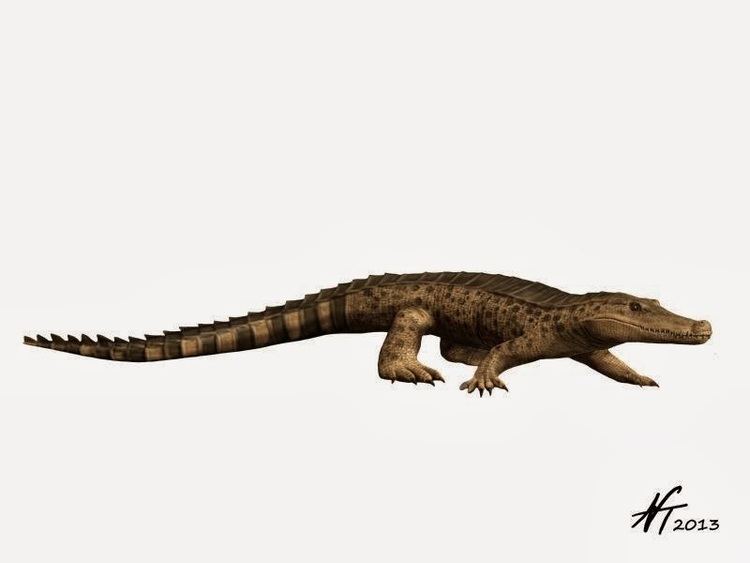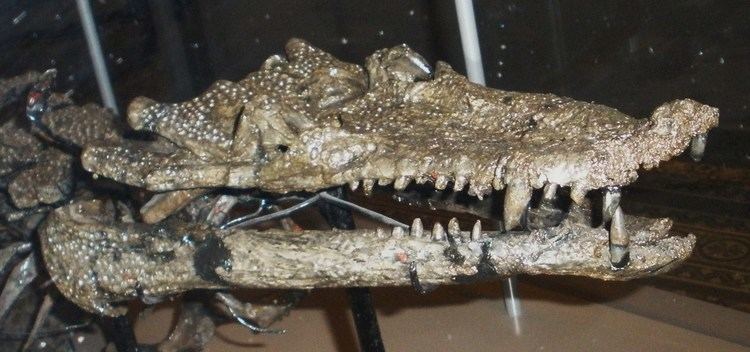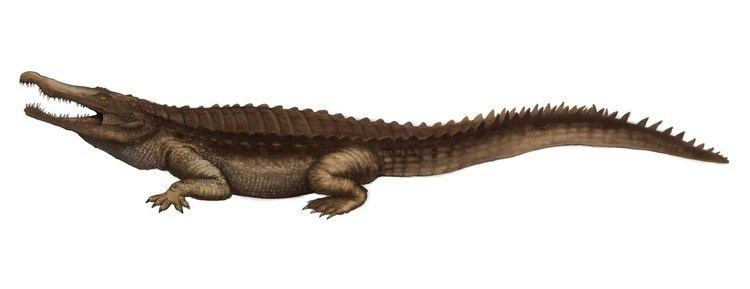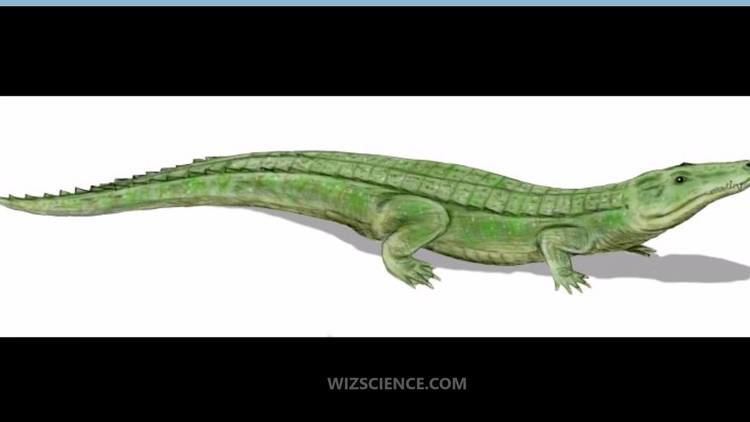 | ||
Similar Goniopholididae, Theriosuchus, Bernissartia, Pholidosaurus, Mesoeucrocodylia | ||
Goniopholis is an extinct genus of goniopholidid crocodyliform that lived in Europe and Africa during the Late Jurassic and Early Cretaceous. Being semi-aquatic it is very similar to modern crocodiles. It ranged from 2–4 metres in length, and would have had a very similar lifestyle to the American alligator or Nile crocodile.
Contents

Goniopholis ct scan
Discovery and species

Through the years, many species of Goniopholididae have been referred to Goniopholis. Most of these species are no longer considered to belong to this genus. Two species were referred to Goniopholis from Brazil. Goniopholis hartti (Marsh, 1869) from the Lower Cretaceous of Brazil is in fact a member of the genus Sarcosuchus, while G. paulistanus (Roxo, 1936), known only from two tooth crowns and a fragment of the right tibia from the Upper Cretaceous Bauru Group, is a nomen dubium referable only to Neosuchia incertae sedis.

From North America, G. lucasii and G. kirtlandicus are currently placed in their own genera Amphicotylus and Denazinosuchus, respectively, while G. felix, G. gilmorei (Holland, 1905) and G. stovalli (Mook, 1964), all from the Morrison Formation, are referable to Amphicotylus and closely related to Eutretauranosuchus which are known from the same formation.

G. phuwiangensis (Buffetaut & Ingavat, 1983) is known from NE Thailand, but this species is fragmentary and was recently reassigned to Sunosuchus. Nannosuchus from the Early Cretaceous (Berriasian stage) of England and Spain currently considered to be valid, was referred to as G. gracilidens by some authors. Willett’S / Hulke’s, Hooley’s and Dollo’s goniopholidids represent several complete specimens previously classified as either G. simus or G. crassidens, and one of them was recently re-described as the new species, G. willetti (Salisbury & Naish, 2011). More recently these specimens were removed from Goniopholis, and two of the, Hooley’s and Hulke’s goniopholidids, have been already reassigned to their own genera Anteophthalmosuchus and Hulkepholis, respectively. Dollo's goniopholidid has also been assigned to Anteophthalmosuchus.

The type species of the genus, G. crassidens which is known from the Berriasian of England, and the referable species G simus from the Berriasian of NW Germany, might be conspecific. Other species that are referable to Goniopholis include G. kiplingi from the Berriasian of England, and G. baryglyphaeus from the Late Jurassic (Kimmeridgian) of Portugal making it the oldest known Goniopholis species. The species G. kiplingi honors the author Rudyard Kipling, "in recognition for his enthusiasm for natural sciences".
Classification
Below is a cladogram including several Goniopholis species:

